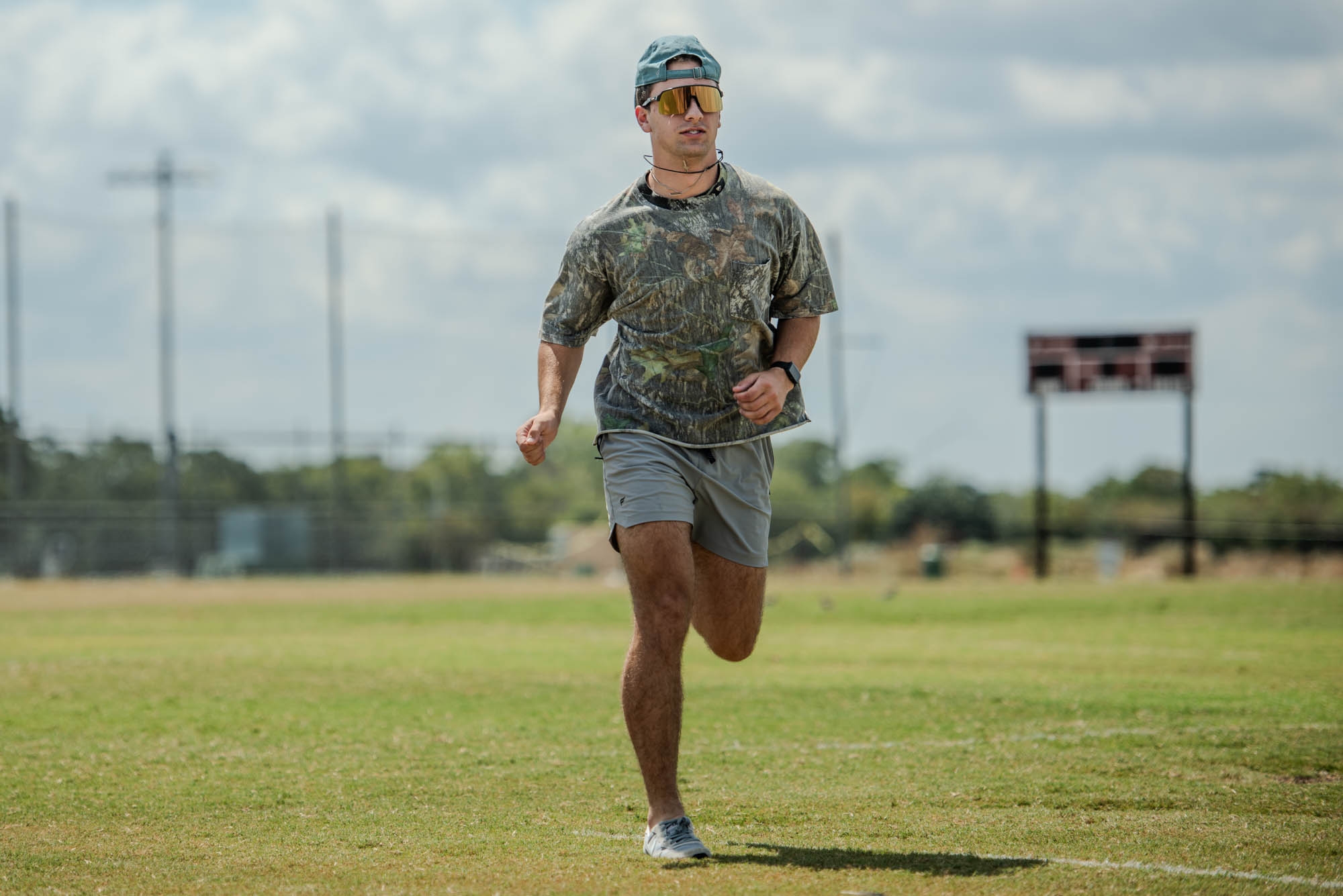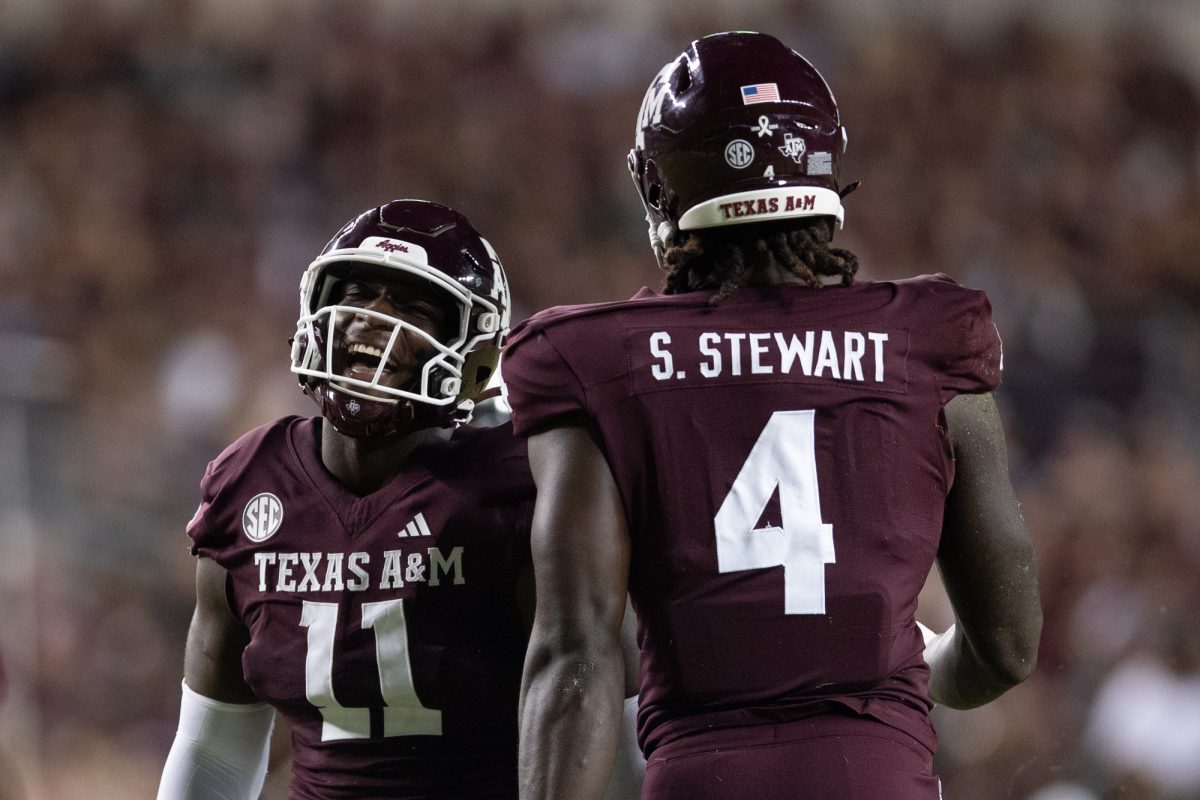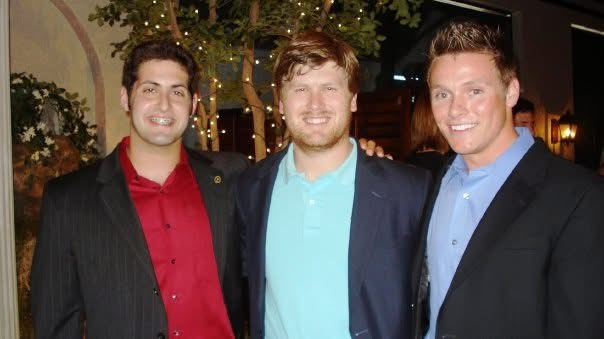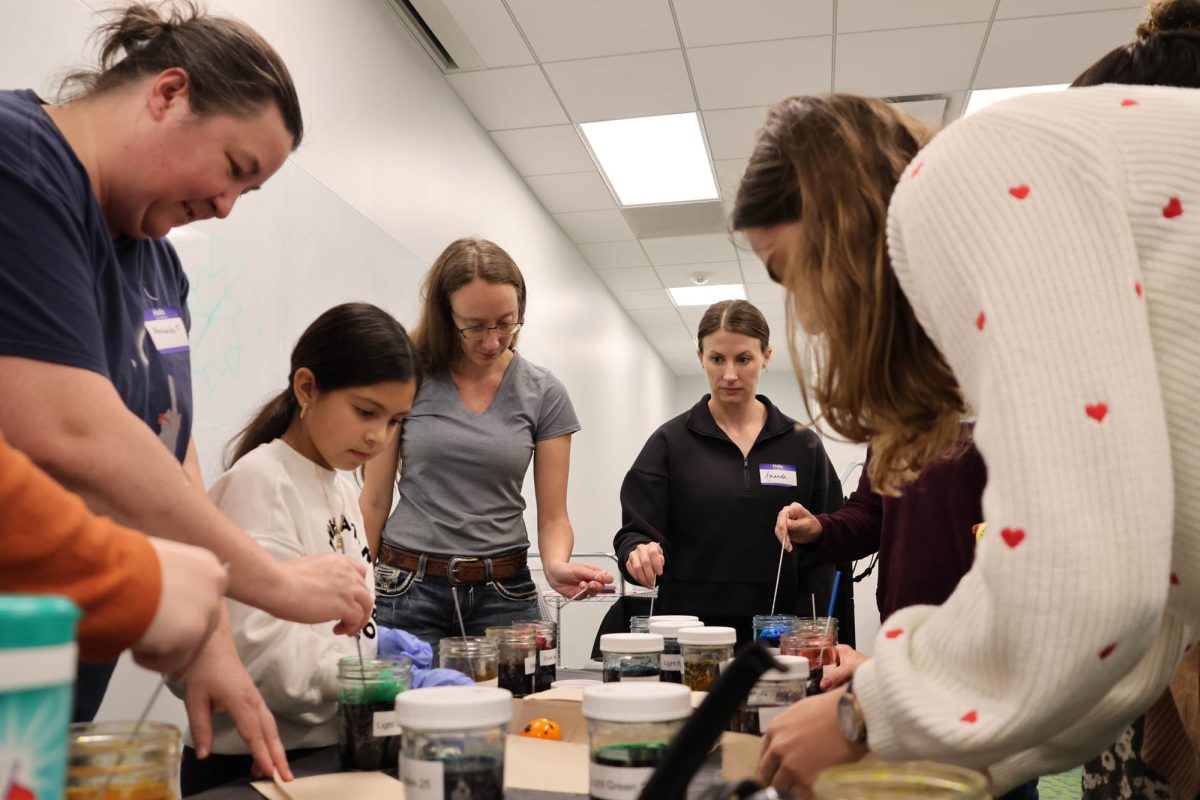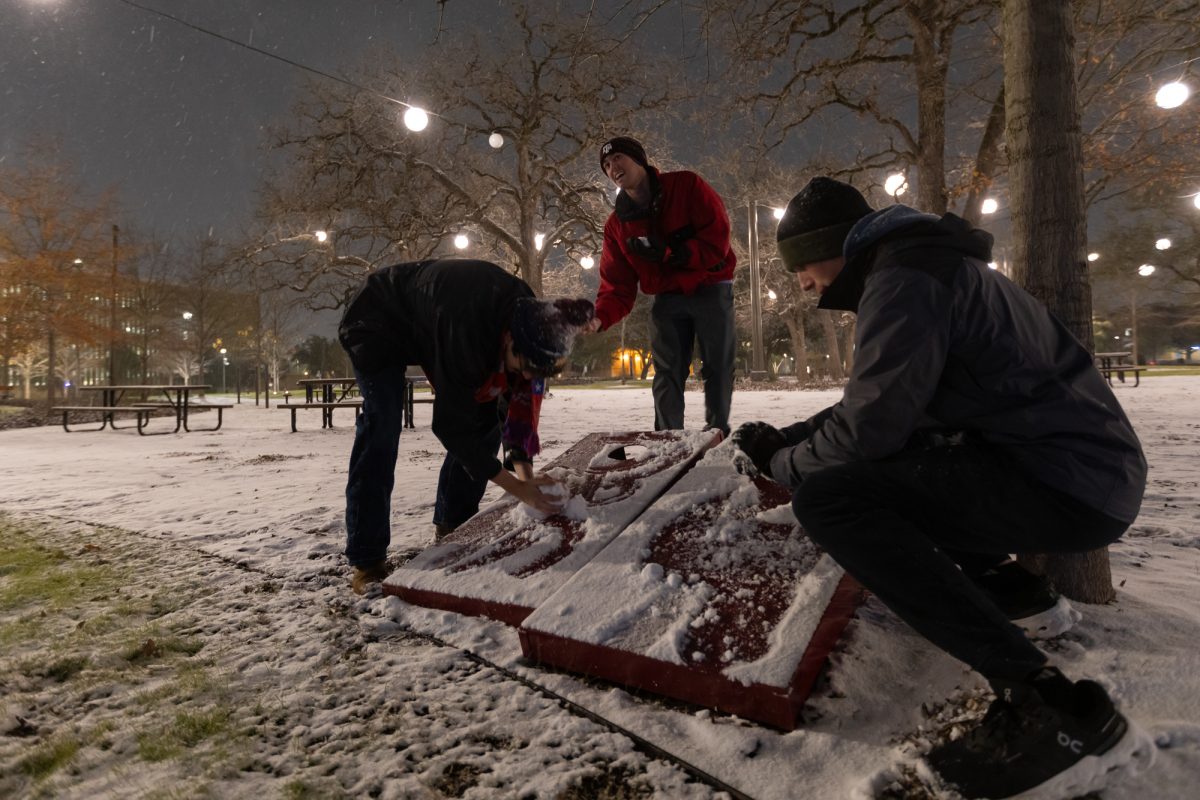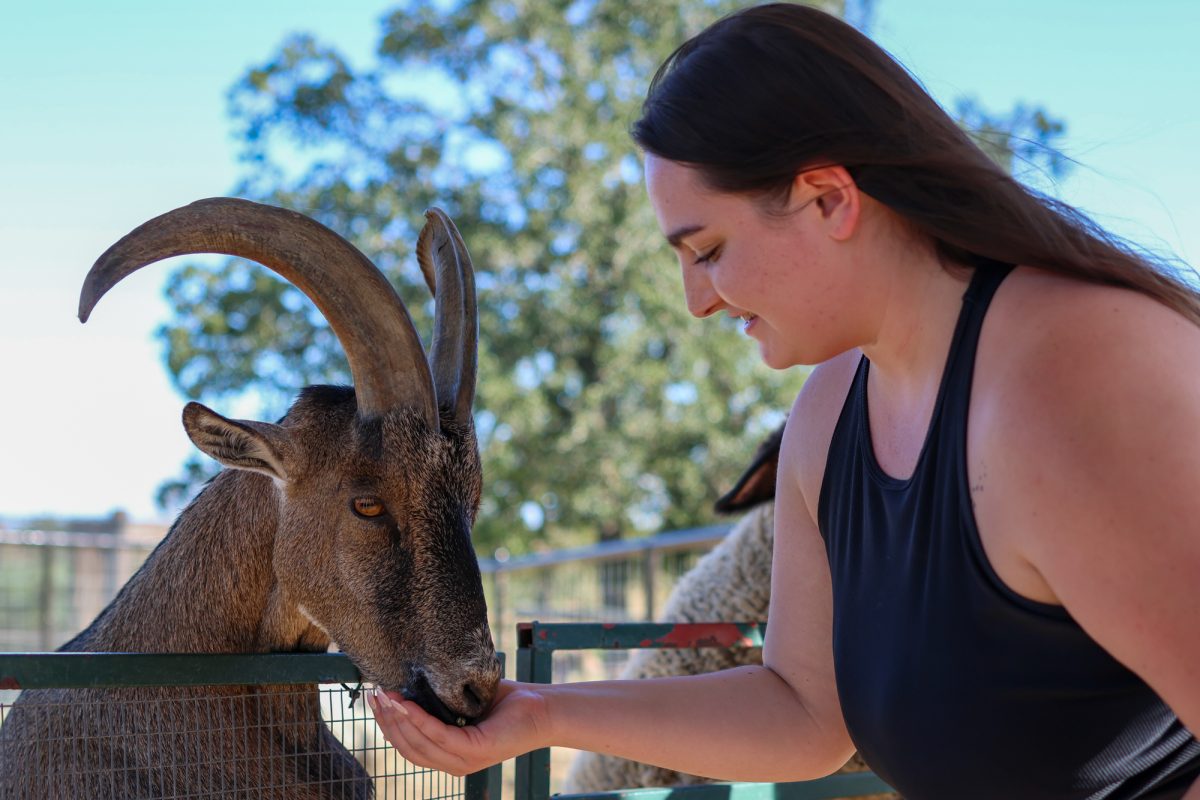Women’s rugby nutrition senior Hannah Blockinger was deep in her routine on the field as she ran through drills she’d perfected a hundred times before. The sun was just beginning to dip below the horizon, casting long shadows across the grass. In an instant, the familiar turned treacherous.
As she pushed off the ground, her foot caught an unseen dip in the field. Time seemed to slow as she felt her ankle twist at an impossible angle, and a sharp pain shot up her leg. What started as a simple practice session had suddenly transformed into a battle for recovery.
“I remember landing wrong, and I looked down and saw a giant divet in the grass,” Blockinger said. “That worries my team because we never know what can sneak up, and we definitely prefer an even playing field.”
Blockinger is one of many athletes from dozens of club and intramural sports that play at the Penberthy Fields at Texas A&M. Located at the intersection of George Bush Dr. and Penberthy Blvd., the complex features both artificial turf and natural grass areas, catered toward drop-in recreation, intramural sports, clubs and special events.
“We see anywhere between 1.5-1.8 million users a year, and 50,000 unique students use our facilities,” A&M Rec Sports operations and leadership director Christian Miller said.
With all these students constantly going in and out of the fields and attending events, Miller said it proves difficult to try and get work done on the field, as it would limit playing time for intramural sports and clubs.
“When I look at fields 7 and 8 used by the rugby teams, a field to really recover, be usable and look pristine, it’s just not realistic for the number of athletes and groups that use the fields,” Miller said. “It’s a balance of, we can close the fields more and make them look nicer longer or we can live with the warts. We have and let people use the fields.”
Miller said he recognized that the grass fields and their current soil conditions aren’t ideal for sustaining heavy use. To keep the fields functional, the sports facilities management team has made temporary fixes by patching the dirt. They’ve also considered sand capping fields, a solution that would improve drainage but would require shutting down the fields for an entire semester.
Women’s club soccer international affairs graduate student Emma Viquez said that while grass is more expensive to maintain than turf, the high usage of the fields should have made consistent maintenance a necessity for the management team.
“Soccer is not playable on the grass fields,” Viquez said. “I’ve played pickup on there, and you can’t pass the ball because the grounds are bumpy and there are holes everywhere.”
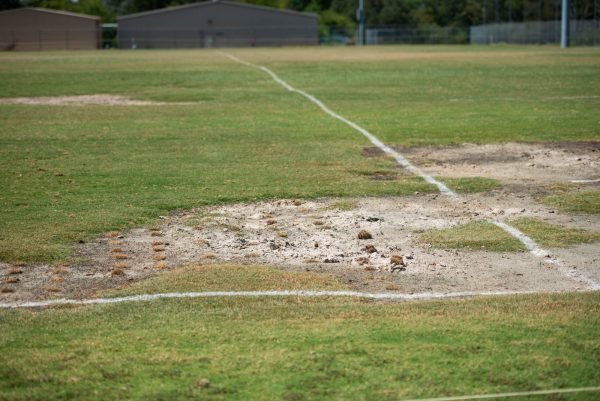
Viquez said she is grateful soccer practices on turf more often, but she pointed out that turf has its own issues as well. She believes it should be patched more often to prevent her team from worrying about injuries.
Miller said the turf was replaced in 2018 and Rec Sports aims to replace it sooner than the standard 10-year mark. It has been exploring options with vendors, including the addition of crash pads for enhanced safety and player comfort. The upcoming upgrades would also feature a cooling system beneath the turf surface.
To guide maintenance strategies, Miller said they had research groups come out to conduct impact testing and studies on sweat loss compared to turf and grass fields. The studies have provided them with valuable insights for improving field conditions.
“We’ve actually brought some turf from Kyle Field whenever they replaced their field,” Miller said. “We pulled some of that and used it to cover up patches on the turf field, and a lot of it is being strategic about how much of a break you can get in between the fields being played on.”
Viquez said that uneven patches on turf caused players to trip and sprain their ankles. She also observed that the different textures of turf across the Penberthy fields contribute to these issues.
“Some of it is really flat and some of it is coming up from the ground which creates a tiny hill,” Viquez said. “These small things make it more dangerous to play on the fields.”
The grass fields present a different challenge, distinct from the issues of slipping or turf burns.
The dry, cracked earth overshadows the sparse patches of green, making it a struggle for most athletes. Uneven terrain and hidden divots, ranging from tiny holes to treacherous patches, litter the fields. Even if athletes manage to navigate these obstacles, they still face the lurking threat of fire ants and sand fleas, camouflaged within the dusty ground.
Men’s lacrosse economics sophomore Connor Milne said he prefers to play on grass fields over turf, but the conditions of the grass field don’t allow him to do so.
“The grass fields are awful and they’re downhill, and there’s holes all over the field,” Milne said. “In the fall, when we have our practices on the grass fields, hardly anyone shows up.”
For men’s rugby university studies senior Eric Hawkins, the grass fields prove to be a challenge during practice. Men’s rugby practices on fields 8 and 9, which is particularly challenging due to their poor condition. When Hawkins plays on a pitch, he said he’s sometimes worried about his surroundings more than playing a game.
“I twisted an ankle and was out a couple of weeks because I stepped in a sand pit once,” Hawkins said. “I was just playing, looking up and didn’t see the ground in front of me and busted my ankle.”
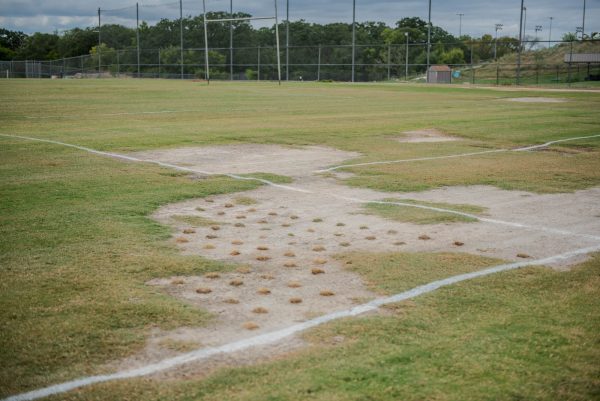
Hawkins said he found the presence of a massive sand pit in the middle of the field both surprising and frustrating. It’s something he feels should not be a concern during practice. He said he’s not concerned with the length of the grass, but rather with the large patches of sand and dirt and the inconsistent maintenance of the field.
“I noticed after breaks, sometimes some of the holes will be filled in; it just depends because over the summer they got a few of them repaired on the field,” Hawkins said. “But there’s still quite a few poorly maintained fields.”
The most recent issue the Student Recreation Center is trying to resolve is sand capping. Miller said that while this solution could greatly improve the field conditions, it would require closing the fields for a significant period. This would necessitate relocating several clubs and disrupting their practice schedules. To address this, the operations team is strategically planning the timing of repairs to coincide with periods when field usage is lower, aiming to minimize the impact on athletes.
Miller said there is an importance of balancing expectations with practical realities. He said addressing issues like holes in fields is crucial to prevent injuries, such as rolled ankles, and he is committed to ensuring his team can respond in a timely manner.
“We can’t promise it to be perfect, but we want it to be as good as possible,” Miller said.
Miller outlined plans to begin patching the fields next semester. His team is also focused on improving communication with sports teams to provide timely solutions for problems like fire ants.
“We’re fortunate we’re so big, but with the increasing size also comes [a] fair share of problems,” Miller said. “We do send out a feedback survey, and we try to discuss the problems through them and we look at the data, numbers and timing to find gaps where we can go in and fix these fields and disrupt the least amount of students.”


